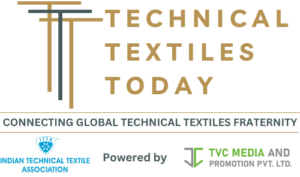The budget includes a five-year Cotton Mission to boost cotton output.
Two shuttle-less loom types are added to the list of textile machinery that is completely exempt under the budget.
img

Budget announces a decrease in knitted materials’ Basic Custom Duty.
The list of duty-free imports now includes nine goods, such as wool polish materials, seashells, mother of pearl (MOP), cattle horns, etc.
On February 1, 2025, the Union Finance Minister unveiled the Union Budget 2025–2026. The Ministry of Textiles would receive an expenditure of Rs. 5272 crores (Budget Estimates) year 2025–2026. This is a 19% increase above the 2024–25 budget forecasts (Rs. 4417.03 crore).
A five-year Cotton Mission to boost cotton output, particularly for extra-long staple types, has been planned in the Union Budget 2025–2026 to address the issues of stagnating cotton yield. Under this mission, farmers will receive assistance in science and technology. In accordance with the 5 F concept, the mission will boost farmers’ incomes and contribute to a consistent supply of high-quality cotton. This plan will stabilise the supply of raw materials, lessen reliance on imports, and increase the global competitiveness of India’s textile industry, which is 80% driven by MSMEs, by increasing local productivity.
Two more shuttle-less loom types were added to the list of totally exempted textile machinery in order to encourage the local manufacture of technical textile goods, such as agro-textiles, medical textiles, and geo textiles, at competitive rates. Shuttle-less loom duty Shuttle-less looms and Rapier looms (below 650 meters per minute) The current 7.5% of air jet looms (below 1000 meters per minute) used in the textile industry has been reduced to zero. By lowering the price of premium imported looms, this clause will support efforts to modernise and increase the weaving industry’s capacity. In the technical textile sector—agro textiles, medical textiles, and geo-textiles—this will also promote Made in India.
For knitted materials covered by nine tariff lines, the basic custom duty rate was raised from 10% or 20% to 20% or Rs. 115 per kilogramme, whichever is higher. This would reduce low-cost imports and increase the competitiveness of Indian knitted fabric producers.
The export term was extended from six months to a year, with the option to prolong it by an additional three months if necessary, in order to ease the export of handicrafts. This clause, which extends the list of goods and the conversion period for duty-free imports of raw materials intended for export manufacturing, would help handicraft exports. The list of duty-free imports now includes nine goods, such as wool polish materials, seashells, mother of pearl (MOP), cattle horns, etc.
MSME accounts for 80% of India’s textile industry. Textile MSMEs will benefit from increased lending, coverage, and budgetary emphasis on exports. The textile industry will benefit from additional announcements such as the establishment of the National Manufacturing Mission, the Export Promotion Mission, the Bharat Trade Net, the Fund of Funds, the Measures for Labour-Intensive Sectors to promote employment and entrepreneurship opportunities, the revision of the classification criteria for MSMEs, and others.
